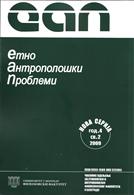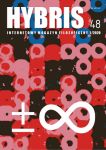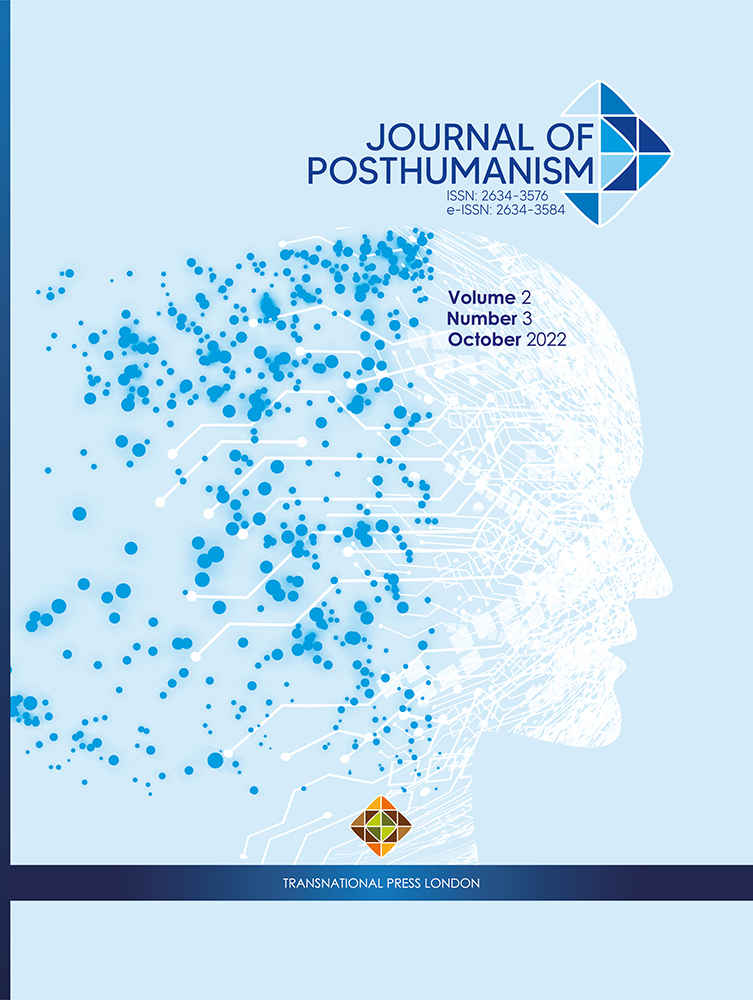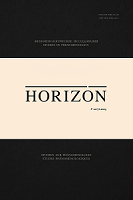Politika, polemika i akademija:razgovor s Ernestom Laclauom
Cconversation with Ernest Laclau
More...We kindly inform you that, as long as the subject affiliation of our 300.000+ articles is in progress, you might get unsufficient or no results on your third level or second level search. In this case, please broaden your search criteria.
Cconversation with Ernest Laclau
More...
The article compares Roland Barthes’s and Juri Lotman’s notions of ‘second-order semiological systems’ [systemes sémiologique seconds] and ‘secondary modelling systems’ [вторичные моделирующие системы]. It investigates the shared presuppositions of the two theories and their important divergences from each other, explaining them in terms of the opposite strategic roles that the notions of ‘ideology’ and ‘culture’ play in the work of Barthes and Lotman, respectively. The immersion of secondary modelling systems in culture as a “system of systems” characterized by internal heterogeneity, allows Lotman to evidence their positive creative potential: the result of the tensions arising from cultural systemic plurality and heterogeneity may coincide with the emergence of new, unpredictable meanings in translation. The context of Barthes’s second-order semiological systems is instead provided by highly homogeneous ideological frames that appropriate the signs of the first-order system and make them into forms for significations which confirm, reproduce and transmit previously existing information generated by hegemonic social and cultural discourses. The article shows how these differences resurface and, partially, fade away in the theories of the text that Barthes and Lotman elaborated in the 1970s. The discussion is concluded by some remarks on the possible topicality of Barthes’s and Lotman’s approaches for contemporary semiotics and the humanities in general.
More...
This paper discuss a relationship between mask and myth and how the appropriate analysis by Claude Levi-Strauss may make clearer a complex field of masks in the part of North America. Claude Levi-Strauss stressed the multi-layered character of myth structure. Similar multi-layered character can be seen at the level of expression, content and meaning of Salish, Kwakiutl and other unique masks of this part of North America. Claude Levi-Strauss analysed certain myths trying to explain ‘the path’ of the masks that belong to the people with similar languages, or those who lived nearby. The mythology of Tsimshian, Tlingit and Haïda people have certain common characteristics that point to the similarities with the nearby groups (Kwakiutl). Despite differences that exist at the level of meanings of the masks, there is also common ‘mythological heritage’ of the people who used to live in the Northern Pacific Coast. Claude Levi-Strauss showed that there is no final solution in the myth analysis, and that there is no possibility that the dissection of the problem will reveal some hidden unity. "As mythical though does not want to start clearly somewhere and come somewhere, it never goes through its whole trajectory: there is always something waiting to be fullfield. The same way as rituals, myths are infinite." It seems that Levi-Strauss explanation of the Path of masks goes in that direction.
More...
In the year 2009, Israeli scientists Shlomo Romi and Marjan Schmida wrote that non-formal education “still suffers from an overemphasis on practice, and lacks a comprehensive, adequate theoretical framework” (Romi, Schmida 2009). The aim of this article is to address the insufficient grounding of non-formal education and to propose a post-structural perspective on it. The article is based on the analysis of literature. The scientific articles, documents and information provided by national and international organizations are interpreted in the frame of post-structural philosophy by using the concepts introduced by Michel Foucault, Gilles Deleuze and Fèlix Guattari. The phenomenon of non-formal education is analyzed as a single concept, without the distinction of nonformal education for children, youth or adults. The stand is that the main principles of non-formal education are universal and transferrable. Therefore, the object of the study is non-formal education, while its aim is to interpret the development of non-formal education in the context of post-structuralism.
More...
The paper compares different views on technological society that develop the posthumanist position but avoid technological determinism or social constructivism. Special attention is given to the dichotomy between the concept of biopolitics (Foucault) and the concept of cosmopolitics (Latour) in relation to the issues of plurality and hybridity.
More...
This article critically analyzes Judith Butler’s presentation of Claude Lévi-Strauss in her book Gender Trouble: Feminism and the Subversion of Identity (1999). In this book, Butler criticizes feminists for employing Lévi-Strauss’s binary oppositions and their use of the sex/gender binary in their critique of patriarchy. Butler’s analysis provides a fruitful lens to understand how gender operates. However, as the article shows, this analysis relies on a misrepresentation of Lévi-Strauss’s take on these dualities. Employing Lévi-Strauss’s term “bricolage,” the article reads Butler’s misinterpretation as a twisted form of bricolage, which destabilizes certain assumptions in Lévi-Strauss’s structuralism. The article presents an example of how Lévi-Strauss’s structural theory has influenced not only feminist theory but also its critique. The article also aims at providing an alternative way to understand influential gender theorist Judith Butler’s misinterpretation of other scholars.
More...
In the following article an attempt is made to draw the reader’s attention to the problem of affective and emotional poverty which has resulted from the systematic degradation of everyday experience in contemporary times. The analysis of this problem is based on the writings of different continental philosophers, especially Gilles Deleuze, but also others, like Michel Foucault or Maurice Blanchot. It is suggested that the solution to this problem may lie in the power of creation, and I have tried to offer the reader some techniques or methods which, if undertaken, may develop creativity and release its power. However, the best repertoire of such techniques is to be found in the writings of the above mentioned researchers, so the reader is directed to the original sources.
More...
The article is aimed at defining the possibilities for structural methodology to understand the phenomenon of modern technology. Some principles of postmodernists’ structural research are highlighted. The embodiment of these principles in the analytical discourse is shown, considering the state and development of technical activities and how they allow one to assess and predict future events. These predictions about mechanization, informatization and virtualization of almost all areas of modern society are contemplated pessimistic by some thinkers and optimistic by others. The conducted study showed that the structural methodology is a fairly effective means of philosophical understanding of the phenomena of technical reality. More and more people become involved in technology, and it is generally not perceived as involved in global threats. Instead, the dynamics and the consequences of structural transformations in the technical field are deeply interpreted by philosophers, who formulate their predictions and thus signal the dangers to culture and civilization.
More...
According to Foucault’s ideas, power produces discourses and the clash of discourses leads to the change of subjectivities or consciousnesses and also to the internalization of a particular discourse. In other words, it is via creation of subjectivities that power dominates human beings. The Beats knew that the subjectivity that people assign to themselves is imaginary and illusory; it has been given to them by their culture or society and accordingly, they define themselves and only imagine that they are that sort of persons independently and take it as ‘truth’. This paper strives to show that the Beats were completely cognizant of this process and through resisting the power, subjectivity, and control that society had imposed upon themtried to create new and different subjectivities, as Foucault had recommended.
More...
Hannah Arendt describes thinking as an undetermined process, i.e., as a process that is not conditioned by any event in the world since it does not follow from any specific event in the world and it is not aimed at any such event. The essential feature of thinking is that it is excluded from the world. And in relation to this property of thinking Arendt asks: “Could the activity of thinking as such [..] regardless of results and specific content, [..] be among the conditions that make men abstain from evil-doing or even actually ‘condition’ them against it?” (Arendt 1978, 5). Considering the importance of Immanuel Kant’s account on the mechanism of moral action for Arendt’s analysis of Eichmann’s type of evil, in this article the author argues that it is not the lack of thinking “regardless of results and specific content”, therefore, not thinking as such, that can serve as a condition against evil-doing, but rather the ability to form a positive principle upon which to act, therefore it is the determinate rather than indeterminate thinking that can prevent evil-doing.
More...
An Outlook on Lévi-Strauss structuralism from the point of the notions of “nature” and “culture”, which the French ethnologist employs in his work, is suggested in this paper. It is the author’s thesis that the opposition nature-culture can be conceived as the main line of the interpretation concerning the basic trends of Lévi-Strauss general theoretical thought. Some analysis concerning understanding of the relation between nature and culture have been carried out to defend the above thesis, from the point of view of 1) the subject in question (nature and culture as two distinct realities which are objectivized in people’s thinking), 2) the methodology (the ways of investigation of the relations that organize the two realities or link them together). It appears that symbolic thinking is always the factor which unites the orders of reality. This thinking uses both natural and social substance in order to make them into coherent logical systems. Lévi-Strauss analyses of totemism and mythologicai thinking excmplify this phenomenon (in the former case nature is transformed into culture; in the latter – just the opposite occurs – culture is transformed into nature). The paper presents an evolution of Lévi-Strauss point of view on the realation between naturę and culture. This evolution, however, has resulted in a clarification of the sense in which he uses both these notions. Duality of a possible understanding of these notions is best rendered by the following words of Lévi-Strauss: “nature is preculture and it is also subculture”
More...
This article analyses the concept of enjoyment, proposed by Jacques Lacan, the French theoretician of psychoanalysis. The aim is to show the relation between the enjoyment and the other and to find a possibility to create different social relations in which the other (an individual or a group) is not an obstacle for individual or collective enjoyment but its foundation. In this article I develop the Lacanian argument of enjoyment how a plane of the Real, the possibility to meet the other as a person in everyday situations, allows an individual to maintain solidarity with that other person which before was his imaginary competitor.
More...
The purpose of the article is concerned with the systematization and generalization of the previous knowledge and theoretical achievements in the field of metamodernism as a cultural phenomenon of the 21st century. The interaction of metamodernism with such cultural trends as modernism, postmodernism, and post-postmodernism is determined. The general postulates manifesting the emergence of the new philosophical, aesthetical and cultural trend is defined. After the majority of scholars of postmodernism had emphasized its decline, it became imperative to coin a new terminological name for it to precisely describe the new order in art. Thus, the term “metamodernism” became widely spread as the name of the form of modern culture that had followed the postmodern and therefore needs detailed study and description, which constitutes the vitality of the research. This article aims to research the functions and the assignments as well as to analyze the constituents of metamodernism and the functioning specificity thereof. The methodology consists of the use of general and specific techniques, in particular analysis which makes it possible to research the modern stage of the metamodernist discourse, synthesis due to which manifestation of the new cultural trend is systematized, the descriptive method and abstraction of the preconditions of cognition, such as perception, imagination, understanding, and specifications which make it possible to describe the peculiarities and the interaction of the cultural trends under research with each other, partial prognostication which makes it possible to define the prospects of further research. Scientific novelty. For the first time, the article has systematized understanding of the metamodern as a cultural trend of the 21st century that followed postmodernism and is being actively used to describe the nowadays’ structure of feelings oscillating between the typical modernist coherence and the exclusively postmodernist aloofness. It has also described the functioning conditions thereof due to the emergence of the virtual space. Conclusions. Metamodernism is considered to have emerged and developed due to the emergence of virtual reality since it exists primarily in the virtual space of our lives, which has become available only since the emergence of social networking websites. Simultaneously with writing the manifesto and sketching the boundaries of the new cultural paradigm of 2011, the social network Facebook became open for registration.
More...
Dana 8. svibnja 2004. Jacques Derrida održao je ovaj govor u povodu proslave pedesete obljetnice lista Le Monde diplomatique u Palači sportova u Parizu.
More...
This essay looks at the representations of romantic relationships between humans and intelligent androids in Cassandra Rose Clarke’s science fiction novel, The Mad Scientist’s Daughter (2013). Clarke’s novel encourages readers to re-evaluate common fears surrounding human-android interaction. By closely looking at this novel, this essay offers a posthuman care-ethical approach. This essay argues that in depictions of romances between humans and androids, posthuman intimacies can reaffirm a humanity that is shaped by care when attention is given to autonomy. This care ethic suggests a posthumanist vision of humanity that requires trying to understand and be willing to learn more about the feelings and choices of a nonhuman being – even if those feelings and choices are artificially simulated.
More...
In this paper I defend the importance of Daniel Dennett’s “intentional stance” for Philosophical Posthumanism vis-à-vis humanism. After first establishing the role of intentionality in humanism, I move to a critique of that role from the perspective of both ontology and the history of scientific explanation. Rendering intentionality deeply problematic for humanism, thereby acting in support of Philosophical Posthumanism, I argue that this critique may ultimately be too strong for Philosophical Posthumanism itself. This is because it leads to eliminativism and reductionism. I conclude by arguing that Philosophical Posthumanism needs the more inclusive approach to intentionality found in Dennett’s intentional stance. It does so, but only on a pragmatic interpretation. Without that interpretation, Dennett’s work, and thus its application to Philosophical Posthumanism, falls victim to the very same critique levelled against intentionality in relation to humanism.
More...
There is something quite special about a horse and a rider coming together in significant “otherness” (Haraway, 2003, 16). Their union together has always fascinated me, similarly in the way Leonardo da Vinci was intrigued by anatomy and all its delicate, minute intricacies. Suffice to say I am no artist like the inimitable icon; however, I can try to sketch, draw, doodle and create an image. Ironically I am challenging da Vinci’s painting and idea of the (in)famous Vitruvian Man, that is (hu)man’s being at the centre of the universe. From my own wayfarings and wanderings with image and text, I offer creative and visual imaginings as well as a brief image-text diffractive dalliance (Barad, 2014), with the concept floating harmony.
More...
The discussion follows the logic of Western modern metaphysics (mathematical) and ontology (atomistic materialism) in order to demonstrate how scientific discourses assumed a power to construct the environment. A discourse of any discipline is constructed on the basis of its value to be applied on the material, homogeneous environment, to yield desired technical products, including genetic, chemical, electronic, physiological, etc. Thus, each discourse contains the ‘power’ to remake the environment in accordance with its rules. The result is the following: environment is a discursive construct. Such constructivism is accepted by post-modern writers who claim that all discourses are a power which determines how we understand and treat the environment.
More...
This paper analyzes the influence of J.Derrida’s philosophy on the early thought of French phenomenologist M.Richir. Main texts for the analysis are Derrida’s report « La Différance » and the article « Le Rien Enroulé » by Richir. The author stresses their deep figurative and substantive interconnectedness. Thus, Richir borrows from Derrida a number of key philosophical figures, including the figure of différance itself, and applies them to phenomenological landscape through the “first-person” narrative. Having examined the correlation between Derrida’s figures of différance and Richir’s phenomenalization, the author concludes that Richir, influenced by the impersonal figure of différance, leads his “first-person” narrative in an attempt to take it beyond the limits of classical phenomenological discourse. Moreover, the author finds preconditions for Richir’s introduction of one of his early key concepts “nothing” (rien) in the text of Derrida’s « La Différance ». The main thesis of this research is: Richir borrows Derrida’s understanding of consciousness and performs phenomenological description from its perspective. The paper considers Derrida’s text as a key to understanding Richir’s article « Le Rien Enroulé » and, as a result, the key to his early philosophy in general.
More...
The article builds on Husserl’s “trivial” observations from the manuscript Reason — Science. Reason and Morality — Reason and Metaphysics on the topic of conscience, to then question the neglect of the topic of misguided conscience or self-deception in Heidegger’s model of conscience from §§ 54–60 of Being and Time. In Heidegger’s conception of conscience (as a silent call appealing to the authenticity of Dasein) we will not find a number of points important to the Husserlian understanding of conscience: neither the unrevealed horizons of prior life, nor the relativity of intersubjective contexts, nor a misguided (and doubting) conscience, still less a search for (presumed) evidence. That said, the way Heidegger axiomatically sets up the original culpability of Dasein creates a number of dead ends or blind spots in this model. It is to these that Mark Richir addresses in his interpretation (or, more precisely, two alternative interpretations), speaking of the “original symbolic mishap” that befell Dasein, and then of the “symbolic tautology” in which it has become a prisoner. Richir’s critique is not aimed at “overcoming” Heidegger’s model of conscience, but at demonstrating a transcendental illusion — probably inevitable for one who is guided by “authenticity” and the “inner voice.” This is a kind of critical phenomenology of “authenticity”, which manages to avoid the closedness of phenomenology in itself by “grafting” in it poststructuralism. This is why both the first and the second interpretation by the Belgian phenomenologist focus on the problem of symbolic structures: “original symbolic mishap” in the first case and “symbolic tautology” in the second.
More...